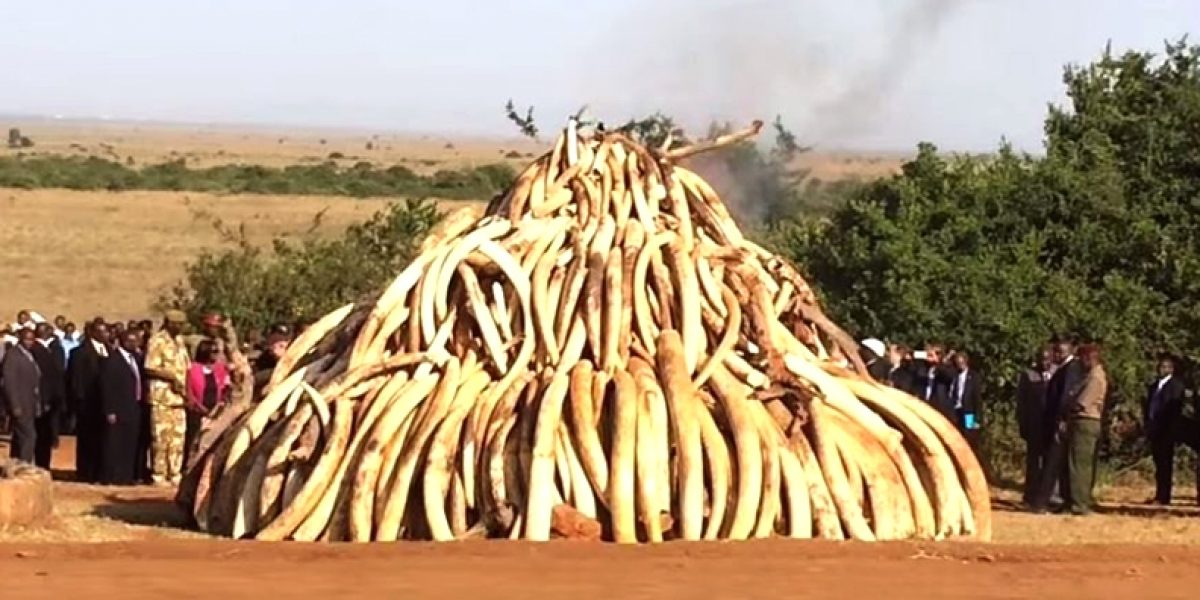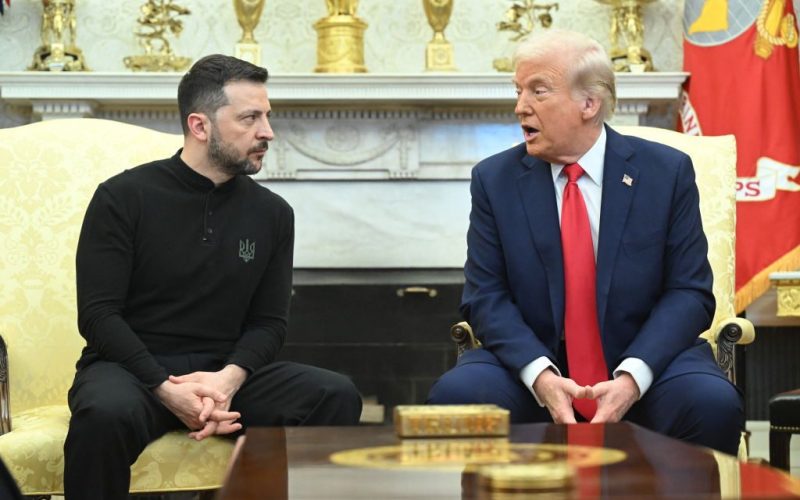In China – where the majority of the world’s ivory is currently either consumed or stockpiled – the recently reported price of ivory is USD$1,100/kg, and the average weight of a pair of elephant tusks is around 7kg. This means that the final value – at point of consumption – of one pair of elephant tusks is worth roughly USD$7,700 in the illicit market. To most economists, the idea of destroying this kind of value is anathema. So why would any country volunteer to surrender this wealth to the flame?
First, stockpile destruction fortifies the credibility of demand reduction campaigns in East Asia, without which the poaching problem will forever be with us. Demand reduction aims to reduce the price by shifting the demand curve inwards. A change in consumer tastes will reduce demand significantly. If countries continue to stockpile their ivory, however, they send a signal to the market that they are doing so in anticipation of being able to sell that ivory in the future. This damages the credibility of demand reduction efforts; why should a consumer refrain from buying now if countries are going to sell again in the future? And if future sales are likely, whatever stigma effect is currently operating may be undermined.
Proponents of a regulated, legal international trade in ivory argue that demand reduction efforts can co-exist with regulated legal supply. But this argument assumes that a legal cartel (one proposed model for governing supply) could provide ivory to the market at a lower cost than criminal syndicates, thereby crowding out illegal suppliers. This assumption is dubious at best, given that the quantities traded through a legal mechanism would be insufficient to flood the market and suppress the price. A cartel of this nature would derive its benefit from high prices, but at the same time ostensible support demand reduction, whose purpose is to drive prices down. A continued high price would however simply continue to incentivise poaching. It seems that trade proponents want to have their cake and eat it too.
Some southern African countries argue that they should be allowed to sell their ivory in CITES-permitted one-off sales to fund conservation efforts, and should be rewarded for maintaining healthy elephant population numbers. Aside from the low probability that the revenue would be directed in such a fashion, it’s not clear that they would make much money from such sales in any event. Under CITES regulations, governments are only permitted to sell to other governments, and therefore have to accept what other governments are willing to pay, which may be as low as a tenth of the illicit value. Even then, they would only able to sell their naturally accrued ivory, not the confiscated ivory. And when sophisticated poaching networks move south, more money allocated towards anti-poaching is unlikely to suffice, as rhino poaching in the Kruger Park has shown.
Read the research this article is based upon, ‘Preserving the African Elephant for Future Generations.’
Moreover, China and the US are in the process of formulating domestic ivory trade bans, so who would these governments sell to anyway? Possibly to Vietnam and Laos, in which the infamous ‘golden triangle’ continues to thrive as a hotbed for illegal wildlife trade. The possibility of the ivory trade shifting to poorly regulated markets is a problem that must be tackled with global international effort, spearheaded by African governments through coalitions like the Elephant Protection Initiative and countries such as China.
Second, maintaining stockpiles is inefficient. As argued above, the probability of being able to sell the ivory in the future is limited, and not worth it in light of how expensive it is for most African countries to maintain stockpiles. Securing a stockpile is nigh impossible as criminal syndicates need only corrupt a handful of local officials to gain access. Maintaining a stockpile is administratively and operationally expensive. Inventory management is labour intensive and technologically demanding. The ivory also has to be air-conditioned to avoid tusks cracking or becoming brittle (important factors for attracting higher prices). The investment of scarce resources into this kind of activity also entails opportunity costs. Human and financial capital currently being allocated towards stockpile management could be more efficiently allocated towards landscape preservation efforts that can become self-sustaining in time through payment for ecosystem services.
Finally, there is the symbolism of the act. Destroying the ivory signifies that ivory belongs to elephants and to no one else. It also communicates that elephants are worth more alive than dead. Ivory consumption is not innocuous, and the rampant poaching required to feed apparently insatiable demand is destroying elephant populations across Africa. We are losing an average of 30,000 elephants a year. Of course, improper or myopic land use planning is also destroying elephant habitats, so poaching should not be seen as an isolated problem. Elephants are however a keystone species for preserving important ecological landscapes. Poaching also has a negative impact on communities – it benefits a few at the expense of the collective. Recent academic work demonstrates that community conservancies (areas set aside for wildlife conservation) in northern Kenya are highly effective forms of landscape (and therefore elephant) preservation, provided the right incentives are in place. This is crucial to note because in countries like Kenya and Tanzania, the majority of wildlife exists outside formally protected areas.
Kenya should be commended for making a wise – and ultimately efficient – decision. Its example should ideally be followed by its neighbours and those countries further south. Theoretically, it would make sense for all range-state countries to destroy their stockpiles simultaneously and continuously to avoid syndicates raiding remaining stockpiles. Like the destruction of ivory by Malaysian authorities last week, this would send a signal to the global market that ivory is not for sale from anyone, neither now nor in the future. Both ecologically and socio-economically, elephants are worth more alive than dead. While stockpile destruction is commendable, it has to be accompanied by better land-use planning models and stronger community ownership, anti-poaching efforts, domestic trade bans and demand destruction.







